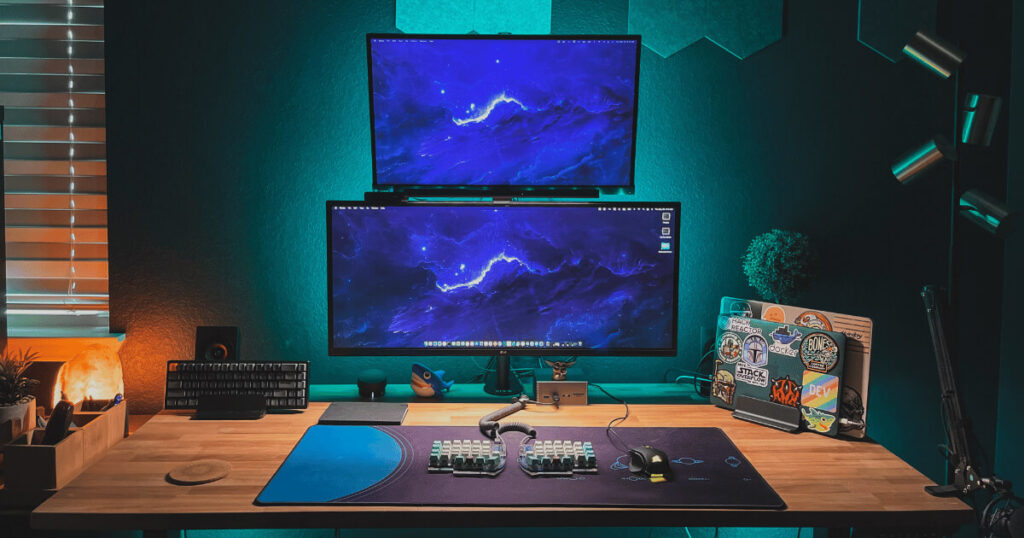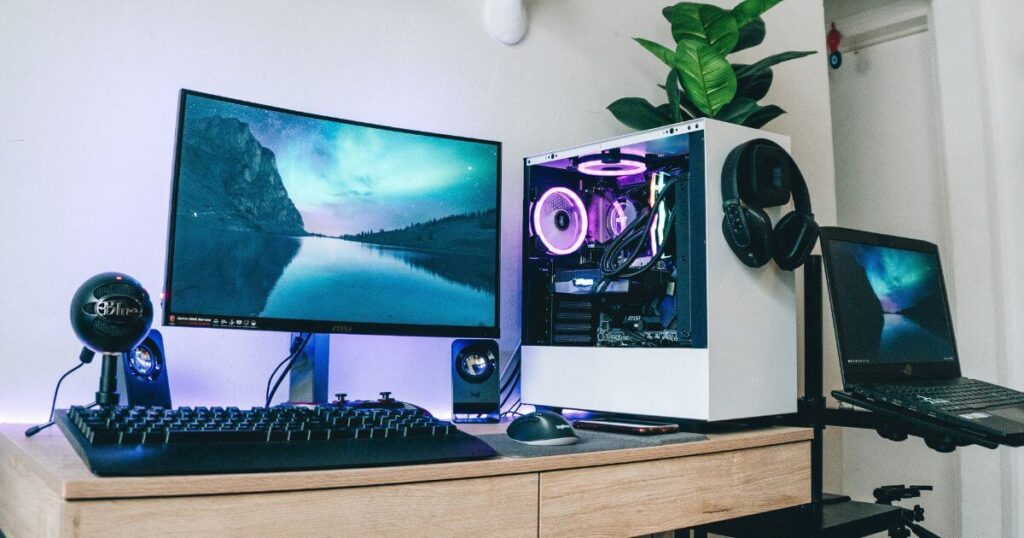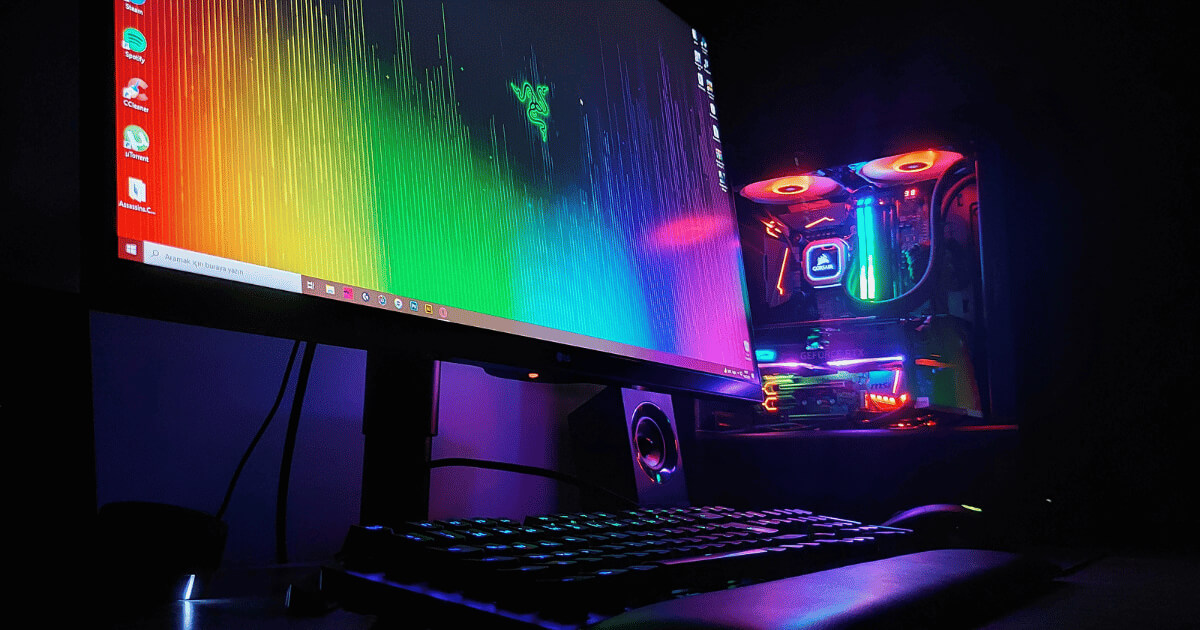If you have been scrolling Reddit or other PC forums chances are you’ve likely come across gamers stating that 1440p is now the new sweet spot in gaming. Indeed, for most gamers, upgrading from 1080p to 1440p is definitely worth it. But is it the right choice for you?
In this article, we’ll explore the clear benefits and the less-discussed drawbacks of making the switch. Read on to see how this upgrade could impact your gaming experience.
Benefits of Upgrading to a 1440p Monitor

Upgrading to a 1440p monitor brings a noticeable leap in image quality, primarily due to its higher resolution. At 2560 x 1440 pixels, a 1440p display offers about 78% more pixels compared to the standard 1920 x 1080p screen. This increase in pixel count translates into sharper and clearer images. Textures are more refined, and finer details are more visible, making everything from text to intricate graphics crisper and easier on the eyes.
Moreover, the enhanced resolution of 1440p allows larger screens to maintain the same level of detail and definition that you would find on a smaller 1080p screen. The larger display doesn’t just mean more screen space; it also translates to a more immersive experience, especially in Open-world games or when watching video content.
Drawbacks of Upgrading to a 1440p Monitor

While upgrading to a 1440p monitor comes with its share of benefits, it’s important to also consider the drawbacks. One important factor is the higher performance demand. To properly take advantage of a 1440p display, in the context of gaming, you’ll need more powerful hardware. This includes a high-end graphics card and a powerful CPU.
Moreover, this requirement leads to a costlier initial investment. Not only does the monitor itself cost more than a standard 1080p display, but you may also need to upgrade your PC’s hardware to handle the extra workload.
What to Consider When Upgrading to 1440p

When considering an upgrade to a 1440p monitor, there are several key factors you should take into account to ensure you get the most out of your new display:
- Budget: The first and perhaps most important factor is your budget. Upgrading to a 1440p monitor is an investment, and it’s important to ensure you’re getting value for your money. Opting for a low-quality 1440p monitor just to have a higher resolution might not offer the improved visual experience you’re seeking. If you’re aiming for a significant enhancement in picture quality, it’s worth investing in a high-quality IPS monitor.
- Your Hardware: Another vital consideration is the capability of your existing hardware. The higher resolution of a 1440p monitor requires more from your graphics card and processor, so ensure that your system can handle the upgrade without sacrificing refresh rate, especially if you’re into competitive FPS games.
- Screen Size: Screen size is also an important consideration, mainly if you plan to keep your current monitor as a secondary display. The physical space on your desk can limit your options. A larger 1440p monitor might provide an immersive experience, but it’s essential to ensure your desk can accommodate both monitors. (Read this article if you wish to learn how to optimize your desk space when using multiple monitors)
- Type of Games: Lastly, consider the type of games you play. For instance, single-player games with rich, detailed environments can be greatly enhanced by a 1440p display. On the other hand, you’re less likely to notice the improved visuals in fast-paced competitive games.
How much performance loss can be expected when upgrading from 1080p to 1440p?
When you upgrade from 1080p to 1440p, expect some reduction in frame rate due to the higher resolution. Since 1440p has 1.77 times more pixels than 1080p, this increase in pixel count generally leads to a decrease in FPS (frames per second). For example, if a game runs at 144 FPS at 1080p, it might run around 81 FPS at 1440p with the same settings. However, please note that isn’t always the case; sometimes you’ll get more frames, and other times, you’ll get fewer, depending on the game.
Does monitor size affect FPS?
Monitor size itself does not affect FPS as long as the resolution remains the same. FPS is influenced by the resolution because it determines the number of pixels your system needs to render. So, whether you use a 24-inch or a 32-inch monitor, if both are at the same resolution, your FPS will not be impacted by the size of the monitor.
What screen size is best for 1440p?
For a 1440p resolution, a 27-inch monitor size is often considered ideal. This size allows for a good pixel density, ensuring sharp and clear images without making individual pixels too noticeable.
Conclusion
We hope this article has provided you with a clear understanding of what to expect when upgrading from 1080p to 1440p. Your decision to switch or stay with your current monitor is a significant one, and we’re eager to hear about it.
Feel free to drop a comment to share your choice or any additional questions you might have.
We're an affiliate
We hope you love the products we recommend! Just so you know, gameraround.com is a participant in the Amazon Services LLC Associates Program, an affiliate advertising program designed to provide a means for sites to earn advertising fees by linking to Amazon.com.

